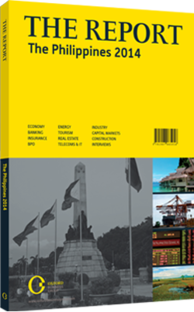Diving deep: Sustainability is key to opening up far-flung destinations
As the Philippines seeks to boost tourism arrivals and elevate remote rural populations out of poverty, developing ecotourism is becoming one of the government’s top priorities in the tourism sector. Born out of the environmental and conservationist movements, ecotourism aims to develop a new ethos for tourism in undeveloped areas that stresses learning about ecosystems and traditional cultures without harming them. With its abundance of remote and pristine islands, coral reefs, rain forests and mountains, the Philippines has a long tradition of hosting ecotourists.
CLUSTERING DEVELOPMENT: Ecotourism features prominently in the Department of Tourism’s (DoT) National Tourism Development Plan 2011-16, which focuses on developing additional tourist attractions in proximity to existing tourist destinations, called “clusters”. Typically, each of these clusters includes at least one potential ecotourism destination. For example, the plan for the Central Visayas cluster, centred around the major tourism sites of Cebu City and Mactan Island, calls for development of ecotourism in remote areas of Cebu Island and nearby minor islands.
The plan identifies 20 such clusters around the country and is helping to prioritise investment in roads linking major tourist sites to the remote areas favoured by ecotourists. The logic behind the plan is that many more of the tourists who are already visiting Cebu or Mactan, or other major destinations, would try ecotourism if it were more easily accessible.
ON THE COAST: The government’s largest ecotourism project, the Integrated Coastal Resource Management Project, is supported by funding from the Asian Development Bank and the Global Environment Facility. It has developed 22 ecotourism sites, clustered around Cebu, Davao, the Zambales region of west-central Luzon, Masbate in the eastern Bicol region and Cagayan on the northern tip of Luzon. The project focused on less-well-known locations, but one of its sites, Palaui Island in the Cagayan region, was ranked 10th in a 2013 listing by CNN of the world’s best beaches after the popular TV reality show Survivor, filmed mainly in the Philippines, shot a season there.
INVESTMENT: Private investors in remote areas where natural beauty is the main draw are also using ecotourism to help preserve pristine areas. One of the most popular resorts of this kind is El Nido, on the remote south-western island of Palawan. Founded as a simple base for scuba divers, El Nido has grown into a group of luxury resorts owned by one of the country’s largest real estate companies, Ayala Land.
Besides scuba diving in one of the best protected and most diverse coral reefs, El Nido offers kayaking, hiking, island-hopping and bird-watching. The resort group has won a number of awards, including the Wild Asia Responsible Tourism Award and the World Travel & Tourism Council’s Tourism for Tomorrow Award for Community Benefit. Laurent Lamasuta, president and CEO of El Nido Resorts, told OBG, “The government has helped a lot in protecting the area. The whole area is a protected zone and there are tight restrictions on building. It was a lot of work to make sure that all the locals understood why this was so important, and the fishing business had to be redirected to a new way of earning from tourism.”
GETTING THERE: El Nido has its own airport and small planes to fly its clients to and from Manila in about an hour. Reaching other, less high-end resorts can be more difficult. Gregory Zajc, general manager of Blue Horizons Travel and Tours, a European-owned, Manila-based travel agency, told OBG that getting to the most pristine areas of the Philippines can be exhausting, especially for long-haul travellers who must usually fly first to an Asian hub city, then to Manila, then to a secondary island, and then drive or take a boat to their ultimate destination.
But the rewards are well worth it. “The Philippines is considered to have the best scuba diving in the world, because the corals are not bleached. The wildlife is truly amazing. There are several locations where it is possible to swim with whale sharks,” Zajc said.
You have reached the limit of premium articles you can view for free.
Choose from the options below to purchase print or digital editions of our Reports. You can also purchase a website subscription giving you unlimited access to all of our Reports online for 12 months.
If you have already purchased this Report or have a website subscription, please login to continue.

